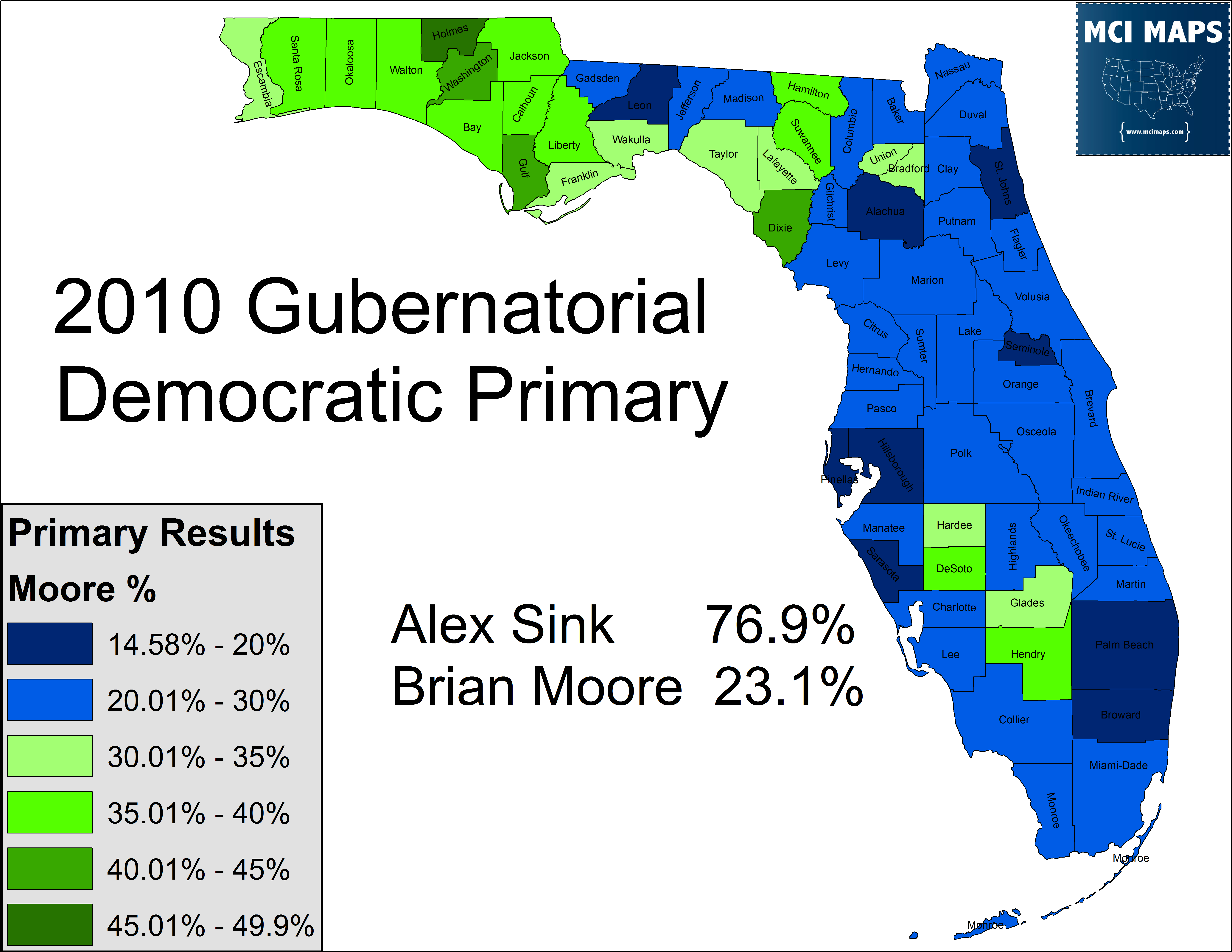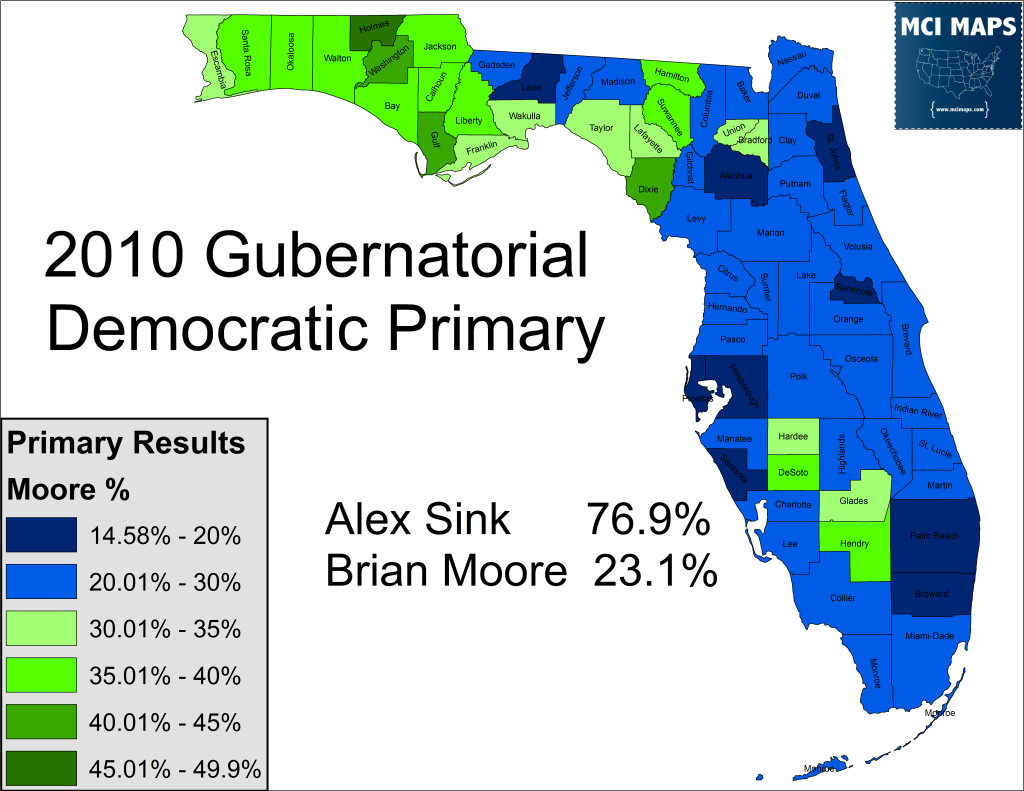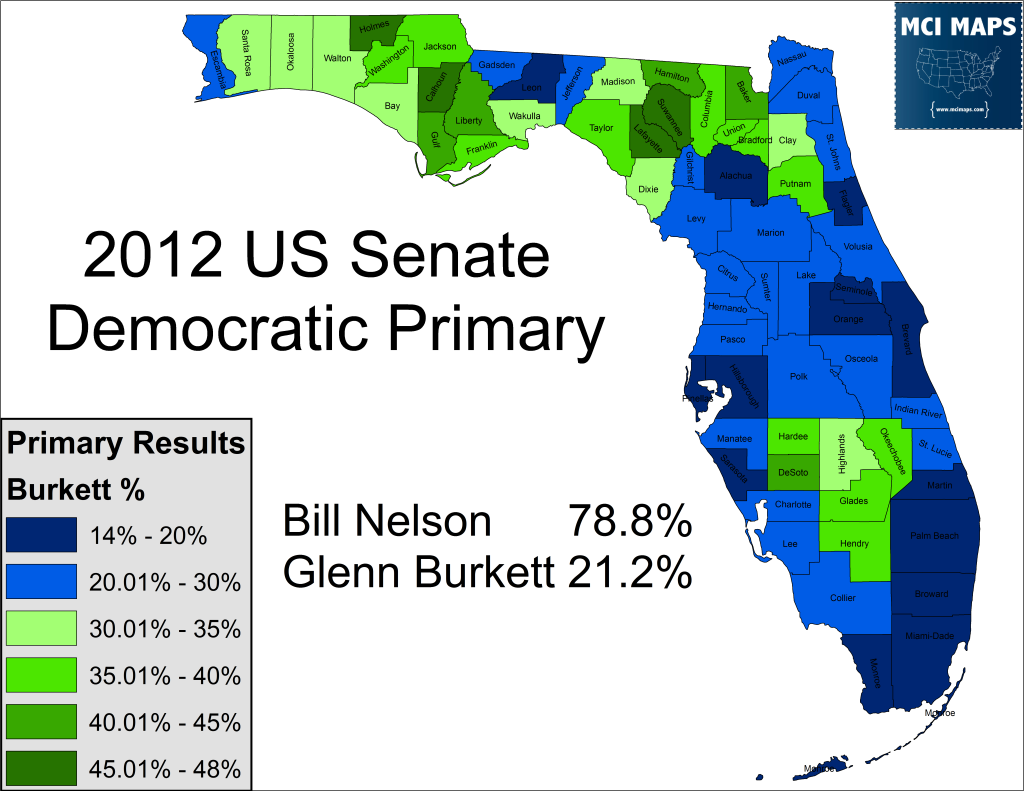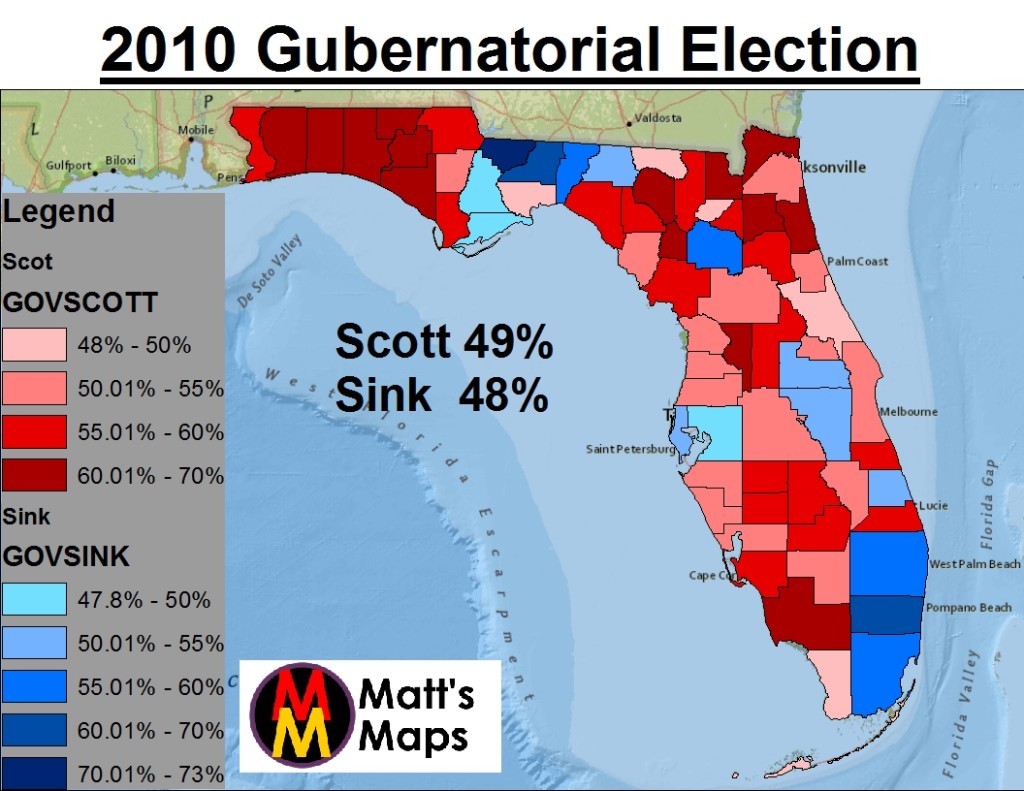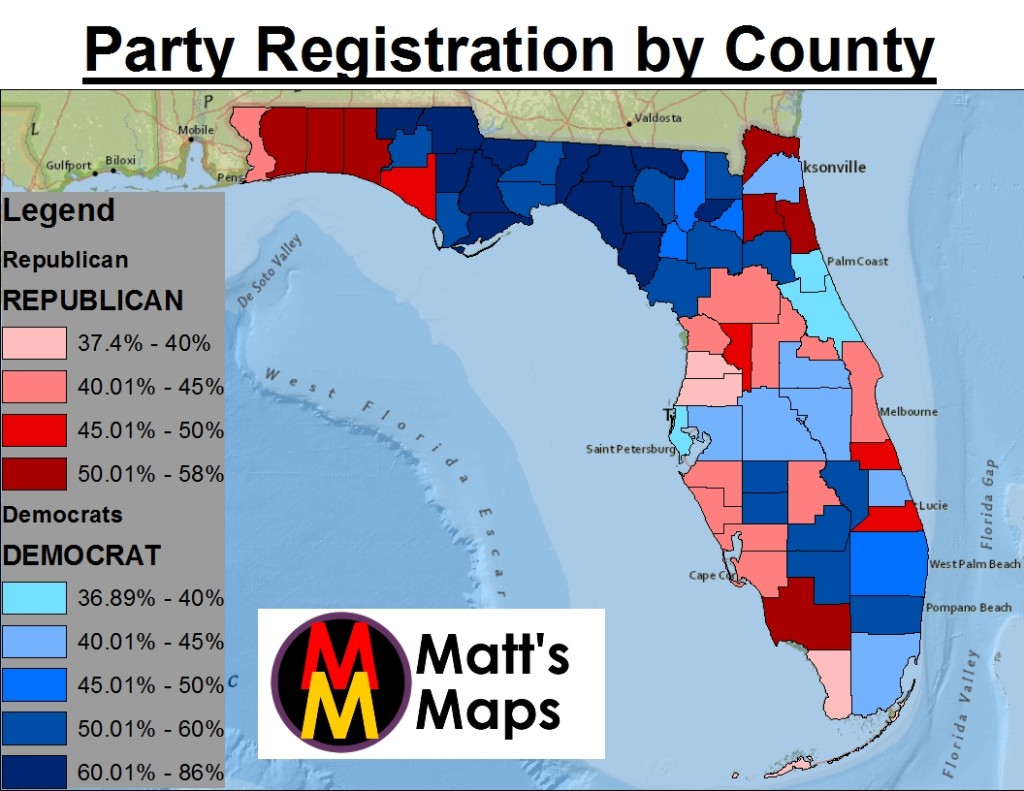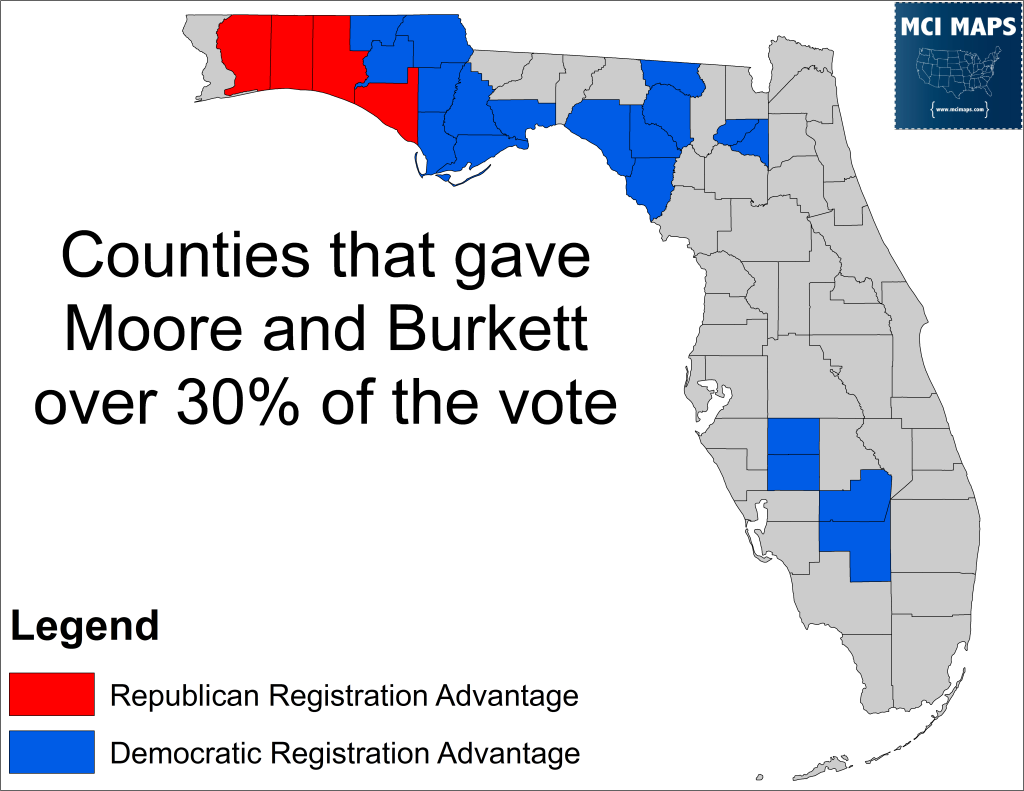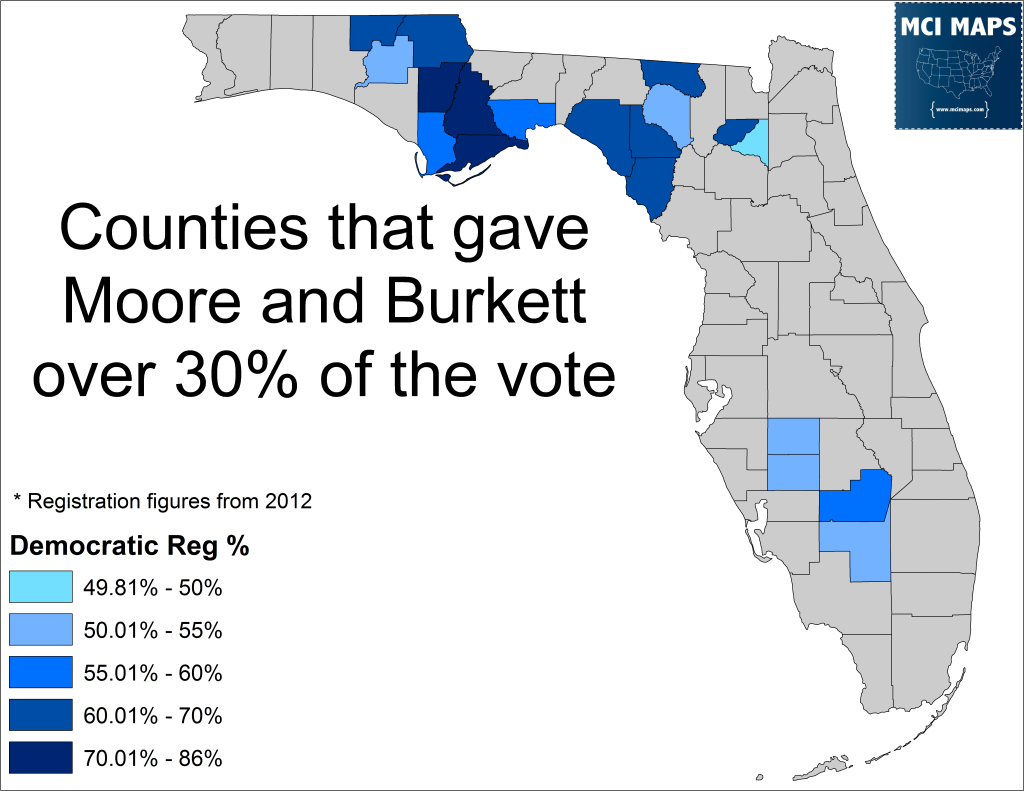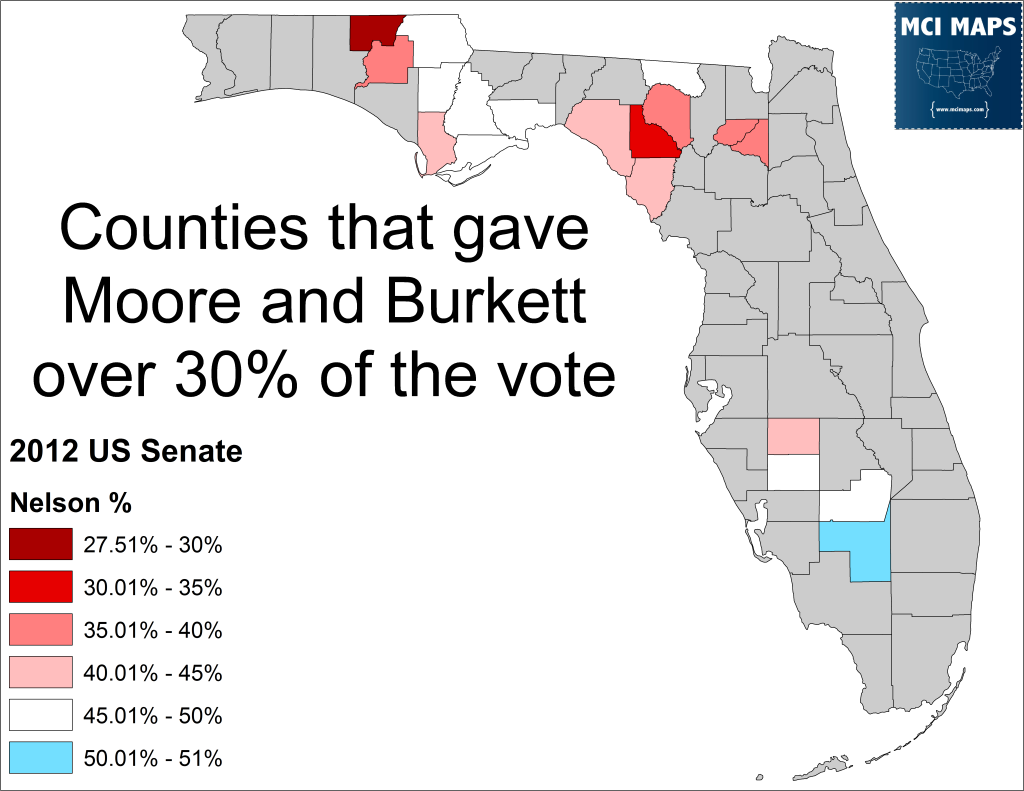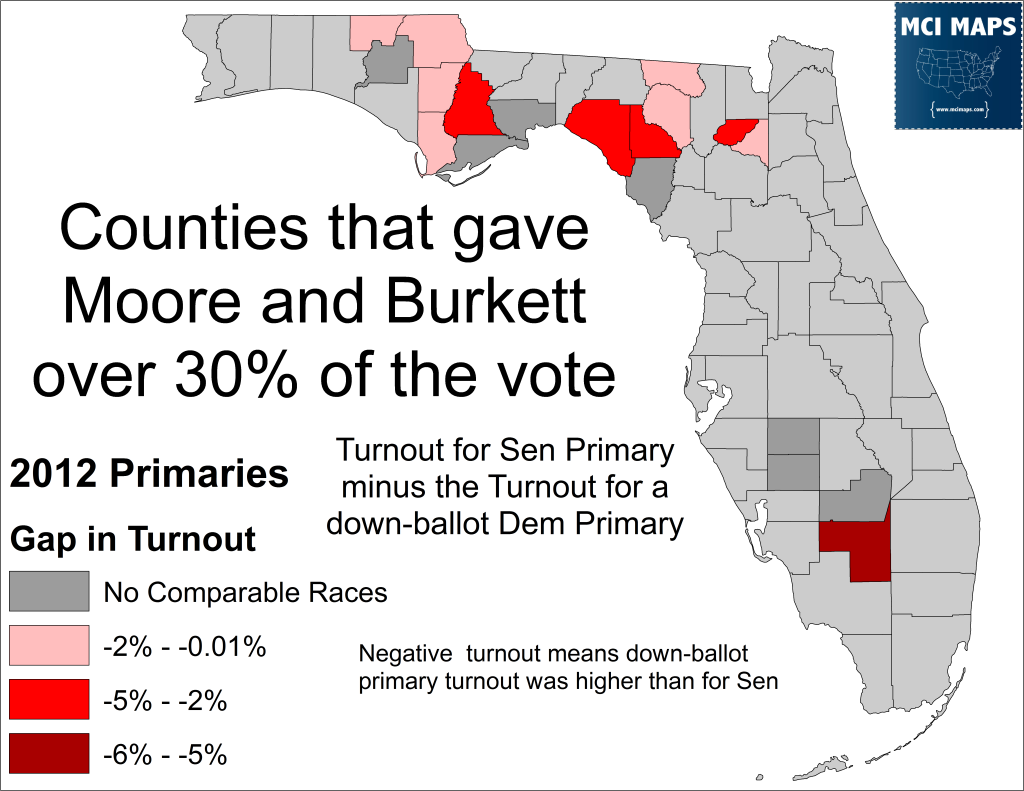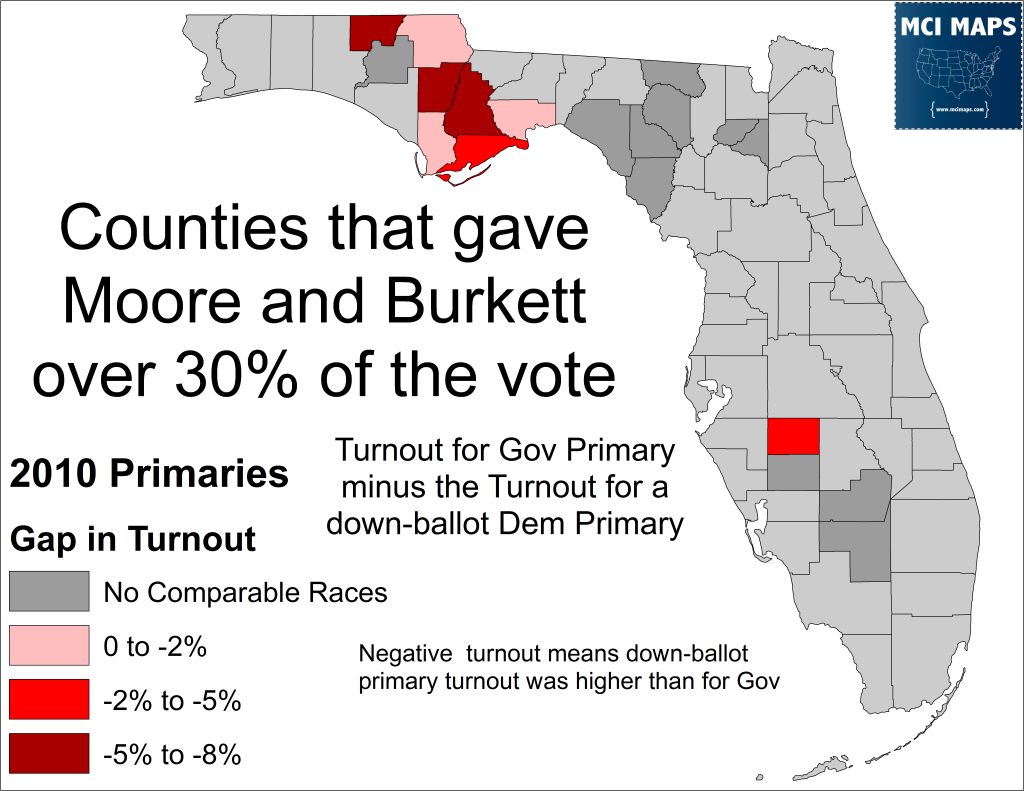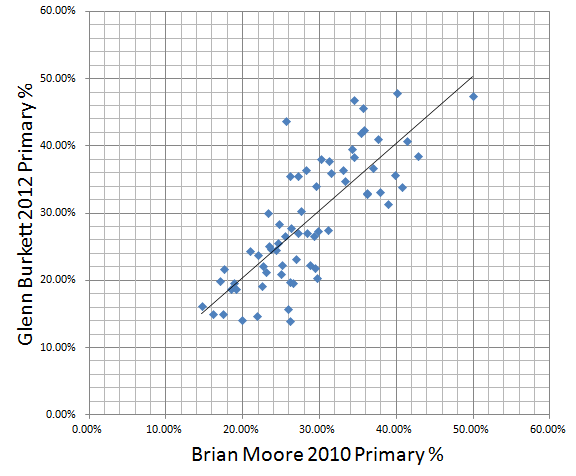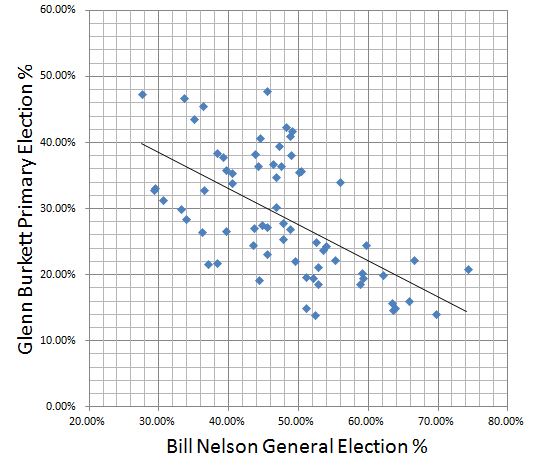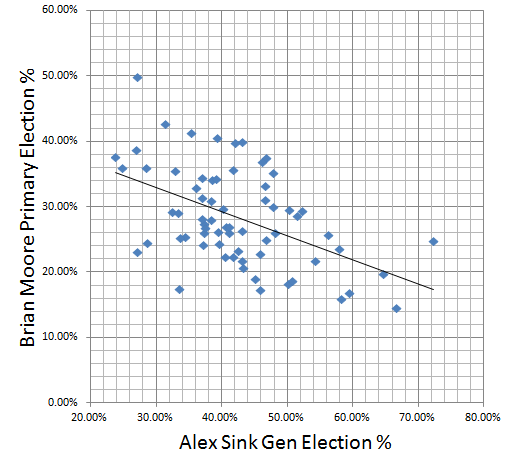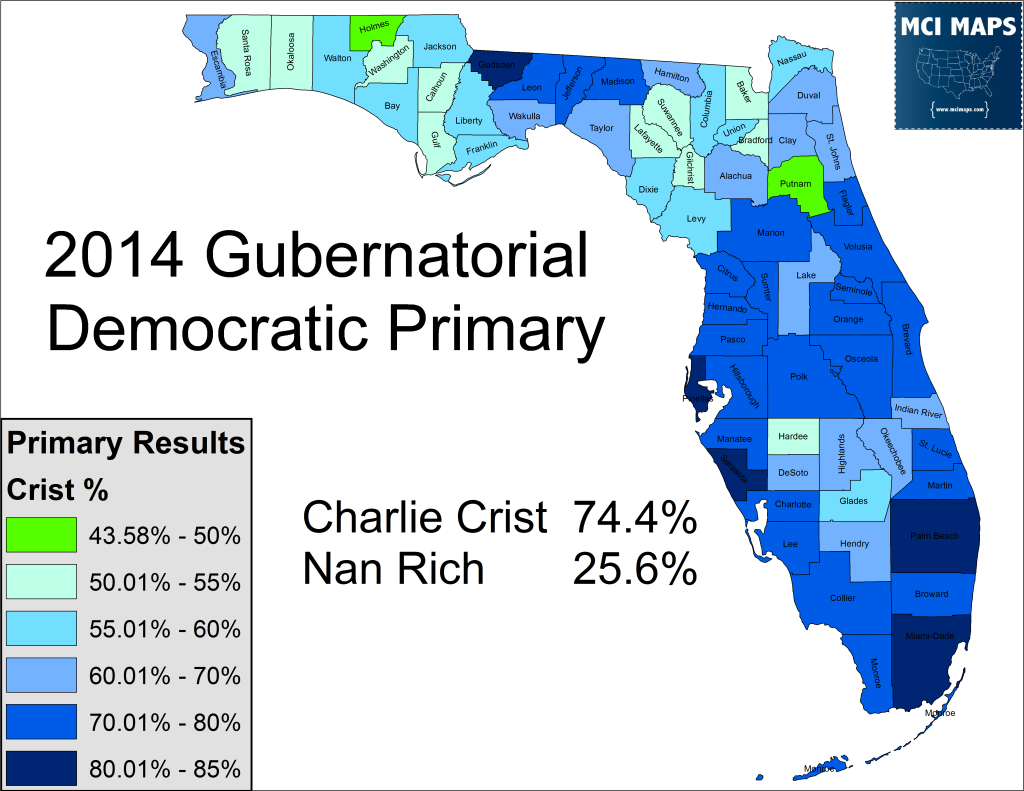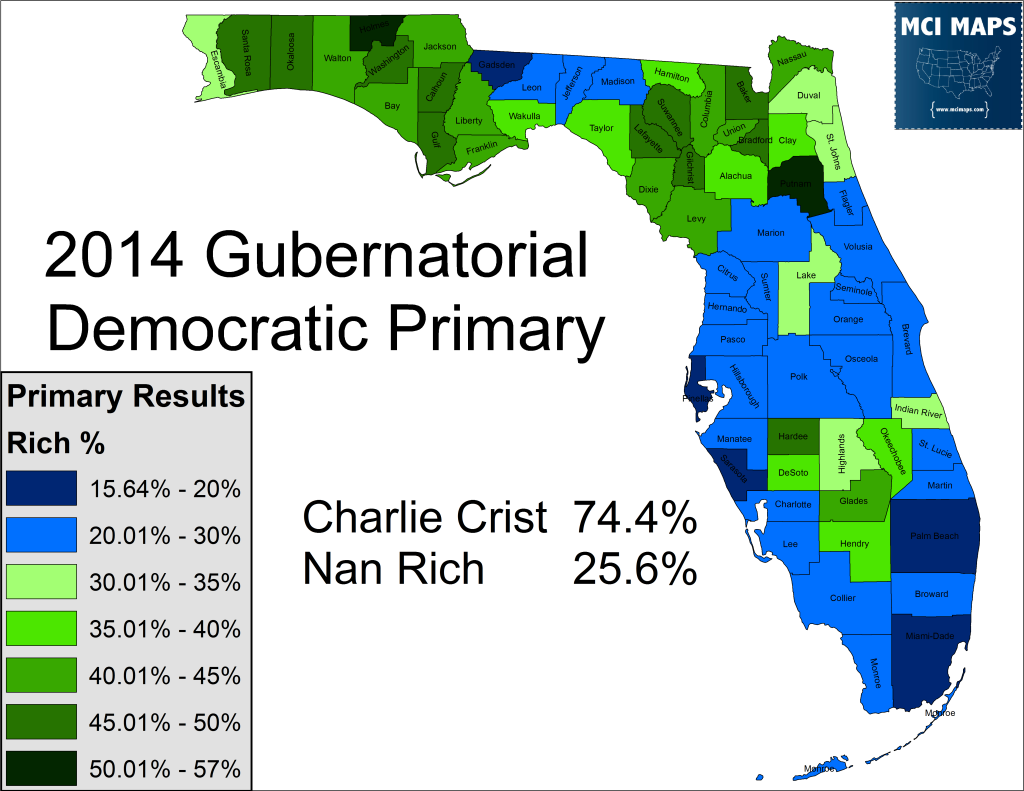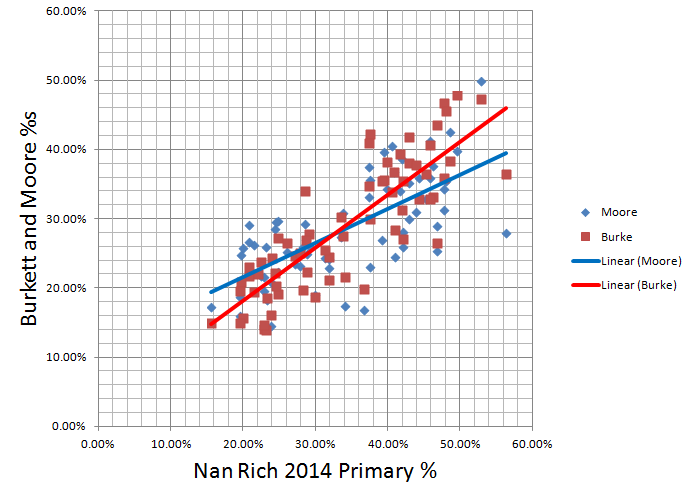Note: This post has been updated at the bottom to discuss the August 26th results
Background
August 26th marks the end of the Democratic Primary for Governor in Florida. The race pitted Charlie Crist, the former Republican Governor and establishment favorite for the nomination, against Nan Rich, a liberal former state senator from Broward County. Rich spent the majority of her campaign attacking Crist for his days as a Republican (a moderate Republican to be clear). However, her campaign never gained traction. Contrary to claims of momentum, Rich has consistently stayed under 20% in the polls while Crist remained in the high 60s. Rich suffered from a lack of money, lack of name recognition, and a lack of a firebrand style that could galvanize grassroots supports. The race had potential to be competitive on paper, but the reality of the campaigns ensures Crist will win big on primary night.
The only real question comes down to the margin. Most expect a significant, 30+ point margin or more. Republicans are trying to mess with the narrative by insisting Crist should win 80-20 (which is unlikely). To be sure, Crist will win big. I personally expect him to come in around 70% to 75% of the vote.
It is entirely possible Crist will win every county in the state. Rich is likely to do well in Broward County, the largest Democratic county in the state, due to her roots there. However, a Broward lose with around 45% is a likely outcome. Outside of Broward or Palm Beach, there aren’t many apparent geographic bases of support for Rich. However, I am willing to wager that there is one region this very liberal, Jewish State Senator from Southeast Florida will do well; the Florida panhandle.
The Panhandle’s Odd Voting History
The Panhandle of Florida, a bastion of conservative Democrats and deep red voting patterns, offers Rich a base of voters. Don’t believe me? Lets take a look at two recent primary elections to prove my point..
The first is the Democratic Primary for Governor in 2010. Democrat Alex Sink, the CFO of Florida, easily beat Brian Moore in the primary. Moore was unknown to most voters. However, he had a unique distinction, he was the Socialist Party’s candidate for President in 2008. Moore was indeed a socialist, not that many knew it due to his invisible campaign. However, his strongest support came from rural north Florida.
In 2012, Senator Bill Nelson had a weak primary challenger from Glenn Burkett. Burkett was a business owner, advocate of healthy eating and supplements, and was somewhat on the left of the spectrum (and also pretty crazy). Burkett had no real campaign presence, similar to Moore.
You see similar patterns in the two maps. These two largely-anonymous challengers to the establishment did best in conservative regions of the state despite being to the left of their opponents.
The two maps below show the 2012 Senate General Election and 2010 Governor General Election. As the maps show, many of these counties stronger for Moore and Burkett voted Republican.
It is important to note that many of these red counties, the same one’s that gave Moore and Burkett strong showings, are also Democratic in terms of registration, often by large margins. These are the lands of southern and rural democrats who vote blue locally but often vote red further up the ballot. The map is from registration figures at the end of 2012.
The regions where Moore and Burkett did best were the same. Their strongest counties were the conservative panhandle and regions of rural south-central Florida. These counties largely vote Republican, often overwhelmingly so.
To examine these counties further, I selected the counties that gave both Moore and Burkett 30% of the vote or more in their respective primaries.
Most of the counties were Democratic in registration, for further analysis, I focused only on those the Democratic counties (all of which had significantly higher percentages than Republicans). These counties can ONLY vote Republican thanks to Democrats voting for Republican candidates. The maps below show the registration figures for those counties (from 2012) and the Senate and Governor results.
As the three maps show, the counties are strongly Democratic by registration but lean Republican or are heavily Republican. Nelson kept margins closer in parts of the panhandle thanks to his stronger level of support with rural voters, however, he still lost most of those counties.
Why are Conservative Democrats voting for Liberals?
These counties may be ancestral Democratic, but they don’t always vote that way further up on the ballot. So why did they vote for liberal candidates like Moore or Burkett? There are a a few factors that come into play
First, these Democrats are coming out to vote for local primaries and are not as interested in their Senate or Governor primaries; especially if they are unsure they will back the nominee in November. Turnout in these counties is often higher than statewide average. However, it is not the top of the ticket bringing these people out to vote, it’s their local primaries. Sure enough, in these counties (those of which had closed local democratic primaries on the ballot at the same time), the local races had more votes cast than the Governor or Senate primaries. The maps below show the turnout gap between the Senate/Gov primaries and a local democratic primary on the same ballot.
In all counties examined, those with a closed democratic local primary saw higher turnout than the top of the ballot. Now, one might excuse the turnout gap for the Governor primary. After all, Alex Sink had just begun running TV and was still not well known by a 1/3 of Democrats by the time of the primary (according to PPP). There simply may have been a lack of interest in the race at the time. Indeed, bluer counties like Alachua and Gadsden saw similar instances were local primaries performed better than the gubernatorial primary. However, this doesn’t explain the 2012 Senate Primary. Nelson is much more well known in Florida, serving as Senator since 2000. Yet in 2012, the turnout gap favoring local races remained. Indeed, while Alachua (home of college town Gainesville) saw the 2010 Gov race underperform in turnout compared to a local primary, in 2012 the US Senate primary performed better. In other blue counties across the state the US Senate primary was the top turnout race on the ballot, but not in the rural counties examined here.
This turnout issue feeds into the second factor for why the votes for Moore and Burkett was so high. The second reason likely comes down to a protest vote. Many of these ancestral Democratic counties have long since left their party with the exception of local elections. These Democrats come out to vote for the local races in August and see a primary for a race they have a strong chance of voting Republican for in November. In instances were they recognize the Democratic front-runner (Sink and Nelson) they voted against them to register their displeasure, not knowing the person they voted for was more liberal. To many voters in those counties, Moore and Burkett didn’t represent liberal beliefs, they represented a chance to buck the establishment choices. Their platforms of beliefs were unknown, they were simply names on a ballot, which allowed them to be used as protest votes. In fact, the similarity between the Moore and Burkett results is pretty striking. In more than half the counties, the difference between the two candidate’s percentages was less than 5%. Moore and Burkett’s county results also showed strong correlation between each other, especially considering they were on ballots in different years for difference races.
For several of these counties, voting for Nan Rich over Charlie Crist will be a way to smack Charlie in the face. Rich may have attention in the blogs and with activists, however, polling shows her with little name-recognition statewide. Many of her liberal positions are unknown. Too many voters, she will just be a name on a ballot, similar to Moore and Burkett.
It is a real possibility that the same factors that drove up support for Burkett and Moore will aid Rich. Rich has a more visible campaign to be sure, but polls still show upwards of 70% of voters don’t know anything about her. This information gap can allow her to do well among rural Democrats who are coming out to vote for their local races. Many of these rural Democrats voted for Crist in 2006 as a Republican. Crist could hold support with these voters thanks to his old ties, or his party switch could anger these conservative democrats. Crist’s situation is a little unique. However, I still expect many of these conservative Democrats to cast a ballot for Rich to register long-held displeasure with their political party.
Lets say Nan Rich does well in the panhandle. Does this mean all those counties that do well for her are out of Crist’s reach in November? That the Democrats have registered their displeasure with Crist? The answer is… it depends on the county.
Primary Voting Compared to November?
Overall, the strength of these weak primary challengers does have a relationship to the strength of the establishment Democrat in November. In both instances, the counties that were strongest for the primary challengers were weak for the nominee in the fall; while the counties strongest for the establishment candidate (often urban blue counties) were strongest for team blue in the fall. The scatter-plots for each race show, as support for the primary challenger went down, the support for Dems in November got stronger.
While their is a relationship between the primary performance and November General, their are important caveats. The relationship exists but it is weak. In addition, several counties that went strong for Burkett and Moore were narrow loses for the Democrats in the fall instead of complete blowouts. In addition, Liberty and Franklin counties both voted for Sink and Nelson after giving strong margins to the primary challengers (with Hendry and Hamilton also voting for Nelson). A weak primary showing against a no-name challenger is not a guaranteed predictor of trouble. However, it does signal trouble. A weak primary showing for Crist in any of these ancestral Democratic counties would signify a fight for the general election.
Conclusions
Nan Rich’s fight for a more liberal Democratic nominee for Governor comes to an end on August 26th. Unfortunately for her, the campaign just never got off the ground in the way it needed to be viable statewide. While Rich fought for a liberal vision, it will be the conservative rural democrats that provide her with a significant block of votes outside the southeast Crist’s time as a Republican could shake this theory up. Perhaps some of these conservative Democrats will stick with him in the primary. On the other hand, they could view Crist “just another Democrat” and cast a ballot for Rich to protest their party again. While the unique nature of this race could lead to surprises, I expect to see a decent showing for Rich in the panhandle on primary night.
Election Night Update
Well the primary results are in, and Charlie Crist beat Nan Rich 74% to 26%. Crist even won 75% of the vote in Broward County, Rich’s home base. Crist dominated the urban Democratic areas, and as predicted, did worst in the rural conservative regions. In fact, Crist lost two of these conservative counties; Holmes and Putnam.
So lets compared Rich’s performance to that of Burkett and Moore. The three maps below are each using the same color scheme.
The three maps show that from 2010 to 2012, the issue of conservative counties bucking the establishment has grown. Is this part of a larger trend? Its hard to say for sure. But there is a noticable increase in these counties giving over 30% to the no-name challenger despite statewide margins barely fluctuating.
Finally, looking at the relationship between Rich’s % in the primary and those of Burkett and Moore shows a significant correlation between all three candidates’ percentages. Rich has the strongest correlation with Burkett.
So the prediction that Rich would do best in the panhandle came true. What does this mean for the general election of 2014? Well, it shows Crist’s time as a Republican is not automatically giving him stronger support among the southern democrats of North Florida. They still voted for the no-name challenger to show their displeasure. Crist can still do what Nelson and Sink did, winning counties that gave strong margins to their primary challengers. However, the fight for North Florida and rural Democrats will not be an easy one. However, Crist’s pathway for November is still clear.

